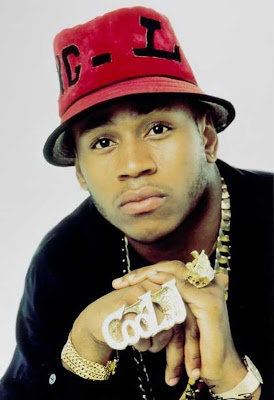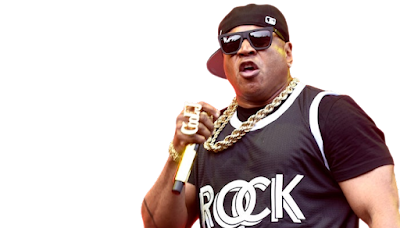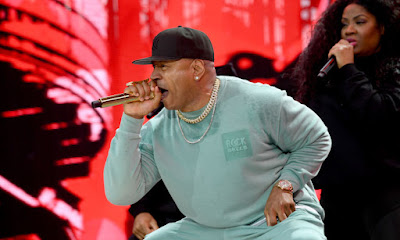LL Cool J: The Def Jam Pioneer Who Made Ladies Love Hip-Hop Forever
Before the bling was synonymous with rap, before hip-hop conquered Hollywood, and before every rapper was a brand, there was a 16-year-old kid from Queens with a boombox, a notebook full of rhymes, and a dream. His name was James Todd Smith, but the world would come to know him as LL Cool J—Ladies Love Cool James. He wasn't just a rapper; he was a force of nature. He was the original heartthrob of hip-hop, the blueprint for the genre's commercial dominance, and a testament to the power of sheer, unadulterated talent. From the raw, drum-machine-driven force of his debut to the velvety smooth ballads that made him a crossover superstar, LL Cool J's career is a masterclass in evolution, resilience, and undeniable cool. This is the story of the kid who helped build Def Jam from the ground up and became the first rapper to achieve true, multi-decade longevity. Buckle up, because we're going back to Cali, and everywhere else he took us.
THE ULTIMATE LL COOL J AUDIO CHRONOLOGY
The Genesis: Forging Cool James in Queens
The story begins not on a glamorous stage, but in the challenging environment of a fractured home. Born on January 14, 1968, in Bay Shore, Long Island, James Todd Smith's early life was marked by trauma. When he was just four years old, he witnessed his mother and grandfather shot by his father, a violent event that left deep scars. He and his mother moved in with his grandparents in Queens, where he found his escape. That escape was music. His grandfather, a jazz enthusiast, bought him a $2,000 DJ setup, and the young James Todd Smith was hooked. He spent his teenage years obsessively writing rhymes, crafting his flow, and dreaming big.
It was during this time that the legend of LL Cool J was born. The acronym, famously standing for "Ladies Love Cool James," was more than just a stage name; it was a mission statement. It was confident, charismatic, and directly appealed to an audience that much of the braggadocious, battle-centric rap of the early 80s often overlooked: women. At 16, he did something audacious. He sent a demo tape—recorded in his grandparents' house—to the newly formed Def Jam Recordings, a fledgling label run out of a dorm room by a NYU student named Rick Rubin. The tape found its way to Rubin, who was blown away by the raw talent and powerful voice. Legend has it that Rubin called him back immediately, and LL Cool J became the second artist ever signed to Def Jam, a label that would soon become the most important in hip-hop history. This wasn't just a break; it was the ignition of a rocket.
The Def Jam Era: The Bomb Squad and "I Need a Beat"
His first single, 1984's "I Need a Beat," was a seismic event. Produced by Rick Rubin, it was minimalist, aggressive, and built on a foundation of crushing drum machine beats. It wasn't just a song; it was a declaration of intent. The track sold an astounding 100,000 copies, a massive number for an independent rap single at the time, single-handedly putting Def Jam on the map financially and culturally. This success funded his landmark debut album, 1985's Radio. The album was a cohesive, hard-hitting masterpiece that showcased LL's versatile flow, from the relentless attack of "Rock the Bells" to the more playful, charismatic stylings of "I Can't Live Without My Radio."
This period also cemented his iconic look: the Kangol hat, the red leather jacket, and the unlaced Adidas sneakers. It was a style that was both street and sophisticated, and it became as influential as his music. His appearance in the semi-autobiographical Def Jam film Krush Groove in 1985 introduced his charisma to the big screen, planting the first seed for a future acting career that would rival his musical success.
The Lover and The Fighter: "I Need Love" and "Going Back to Cali"
If his debut established him as a force, his subsequent albums proved he was a visionary. In 1987, he dropped a cultural bomb with the single "I Need Love." At a time when hip-hop was dominated by aggressive posturing, this was a slow, sensual, and vulnerable rap ballad. The world had never heard anything like it. Critics were baffled, but the public, especially women, adored it. It became a massive crossover hit, proving that rap could be romantic and that LL Cool J could defy categorization. He had successfully expanded the emotional range of the entire genre.
But just as quickly as he could croon, he could battle. The late 80s and early 90s saw LL engage in some of the most legendary rap feuds in history, most notably with Kool Moe Dee. These battles were fought through diss tracks, with LL firing back with the scathing "Jack the Ripper" and the anthemic "To the Break of Dawn." He proved his lyrical prowess was just as sharp as his commercial instincts. This duality was perfectly captured in his 1988 hit "Goin' Back to Cali." With its funky, West Coast-inspired beat and a video full of cinematic flair, the track was both a celebration and a challenge, showcasing his unique ability to be both a lover and a fighter.
Mama Said Knock You Out: The Unforgettable Comeback
By 1990, some in the industry were whispering that LL's star was fading. His previous album had underperformed, and a new wave of gangsta rap was rising. His response? One of the greatest comeback albums of all time. Mama Said Knock You Out (1990) was a tour de force. Produced by his longtime collaborator Marley Marl, the album was harder, sharper, and more lyrically complex than anything he had done before. The title track, with its iconic opening line "Don't call it a comeback, I've been here for years," was a defiant roar. It wasn't just a song; it was a reclamation of his throne.
The album was a critical and commercial smash, winning him his first Grammy Award for Best Rap Solo Performance. It also spawned the hit "Around the Way Girl," a smooth, detailed ode to the kind of confident, independent woman he grew up with in Queens. This album solidified his status not as a fading star, but as an enduring legend who could adapt and dominate any era.
The Transition: From Rap Icon to TV Star and Business Mogul
As the 90s progressed, LL Cool J masterfully pivoted, building a second empire in acting. He had dabbled in film throughout the 90s, but his true breakthrough came with the sitcom In the House (1995-1999). The show showcased his comedic timing and charm, making him a weekly fixture in American living rooms. This was a strategic move that few rappers had successfully managed, proving his mass-market appeal.
But his most significant acting role began in 2009 when he took on the part of Special Agent Sam Hanna in NCIS: Los Angeles. This wasn't a cameo; it was a leading role in one of the most-watched television franchises in the world. For over a decade, he has been a steady, commanding presence, introducing his legacy to a whole new generation who may know him more as a federal agent than a rap pioneer.
His business acumen kept pace with his artistic endeavors. He launched the high-end Todd Smith jewelry line, catering to a luxury clientele. More significantly, he founded Rock The Bells, a brand and festival dedicated to celebrating the "Golden Era" of hip-hop that he helped define. This move was genius; it allowed him to curate his legacy and the legacy of his peers, ensuring the culture he helped build would be honored and preserved.
The Legacy: Hall of Fame and Immortal Status
The accolades for LL Cool J are a testament to his unparalleled career. He is a two-time Grammy Award winner, a Grammy Hall of Fame inductee, and the first rapper to receive the Kennedy Center Honors. In 2021, the ultimate recognition came: he was inducted into the Rock and Roll Hall of Fame, a moment that solidified his place not just in hip-hop history, but in the entire pantheon of American music.
LL Cool J's story is the story of hip-hop itself. He was there at the birth of its commercial rise, he helped expand its emotional and thematic boundaries, he survived its evolutions, and he built a blueprint for longevity that artists still follow today. From the streets of Queens to the halls of the Kennedy Center, he did it all with a Kangol hat, a confident smile, and a flow that never quit. He wasn't just cool; he defined it. And ladies, and the entire world, have loved him for it ever since.

.jpg)




No comments: